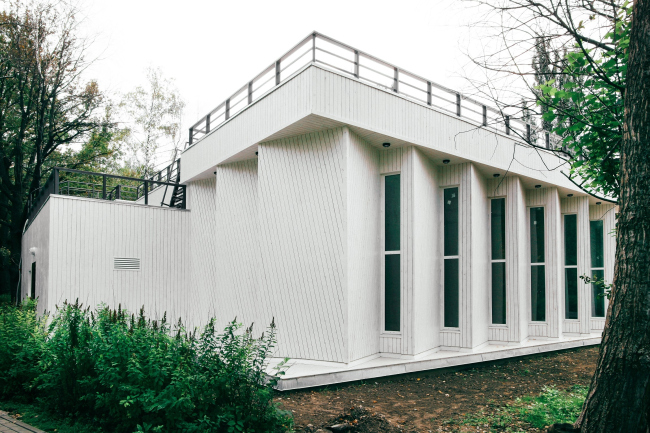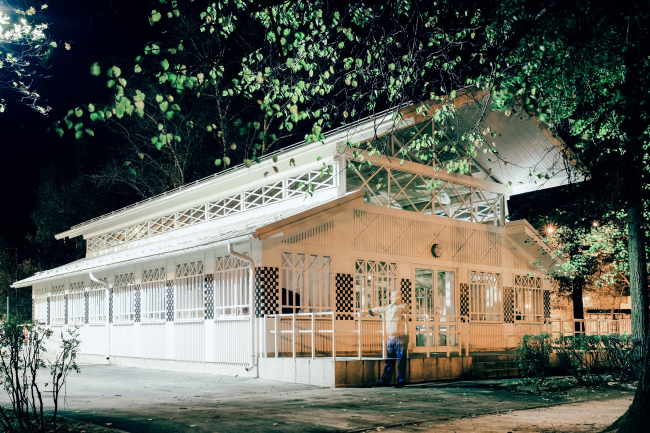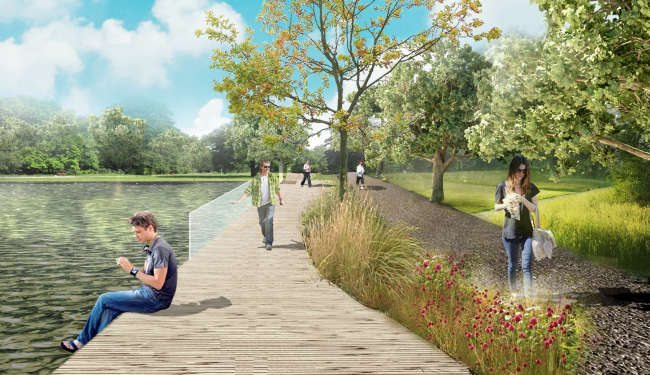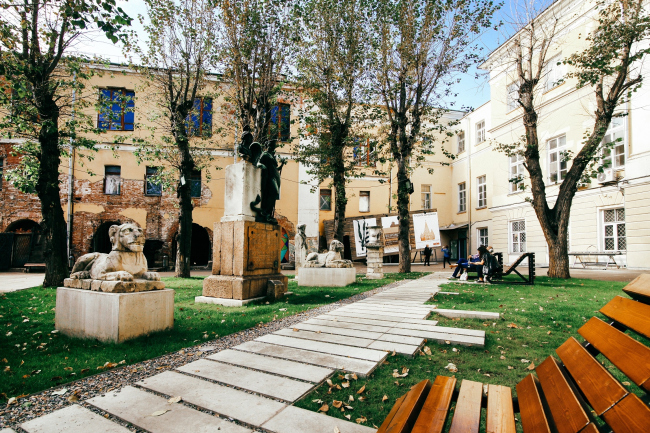|
Published on Archi.ru (https://archi.ru) |
|
| 26.01.2018 | |
|
“People’s Architect”: we can permit ourselves experiments of any kind |
|
|
Lilya Aronova |
|
| Architect: | |
| Anton Ladygin | |
| Aleksey Kurkov | |
| Studio: | |
| NRDN | |
|
An interview with the founders of “People’s Architect” about the benefits of working in a small team, about the pluses of an interdisciplinary approach and about the influence of the cultural environment on the life of standard-construction neighborhoods. © People's ArchitectThey are young, talented, and fearless. Their strong points are their ability to listen to the challenges of the times and quickly react to them, their readiness to handle several tasks at once doing things that architectural firms don’t normally do. They believe that architecture can change the world, that labor of love will pay you in time, and that work can and must bring you joy every day. And, most importantly, their six-year experience proves it all. The conversation was joined by the founders of “People’s Architect”, Aleksey Kurkov, Anton Ladygin, Dmitry Selivokhin, and the chief architect of the project, Nika Barinova-Malaya. Archi.ru: – How long have you been working as a team? Anton Ladygin: – For about six years. It all began when the three of us, I mean, Dmitry, Aleksey, and me, made a presentation for a developer company devoted to the subject of economy-class housing. Back then, we still worked at three different places – we were the employees of Moscow’s three different leading architectural firms. For a while, we worked in this mode, and within a year and a half or so we started our own company. 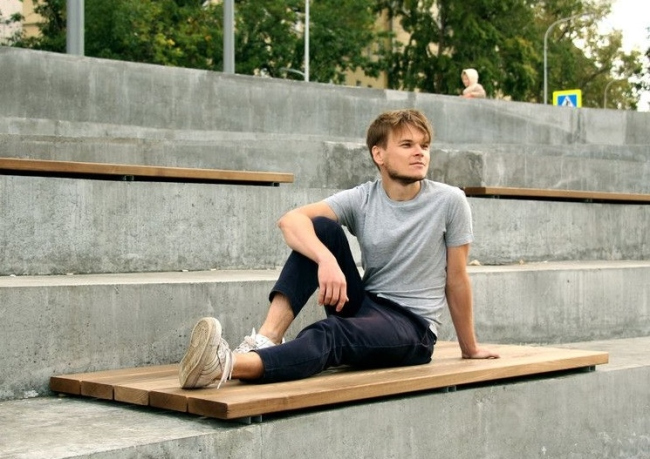 Anton Ladygin. Photograph © People's ArchitectDmitry Selivokhin: – Those were the days, by the way, full of drive and rock-n-roll! Because we had to start totally from scratch – no office, no client base, no nothing. We just took the yellow pages and started calling developers who initially didn’t even want to meet us. And it took quite a while before they changed their minds. – And why did you decide to take the plunge? What was the big idea that inspired you to overcome all of these difficulties? Anton: Still earlier, we studied in the same course and we already did some joint projects, and rather successful ones, too. It was always great working in a team that we ourselves created. This is a whole different level of motivation than if you work at a large firm. Dmitry: I started doing real architectural projects ever since I was in my second year in college – I did them for serious architectural firms but I still did not really have a clear idea of what the profession was all about. I was always interested in how it all worked from the business standpoint, and after I graduated I seriously thought about starting my own firm. In terms of personal comfort, it is very important to me to be able to work with friends and people with whom I think in the same lines. What we’ve got here is a laboratory of ideas; we can permit ourselves experiments of any kind. We pour ourselves some tea, sit down together – and a brainstorming session begins. To me, this is what makes me happy – when your work becomes your lifestyle. Even if you are overdriven, and there is a plague of deadlines to meet, we still have a never-ending celebration here. Dmitry Selivokhin. Photograph © People's Architect– Did you know from the very start what you wanted to do? Anton: At first, we were focused on some unexplored market segment, some vacant niche, into which the larger firms just don’t fit. What I am talking about is designing small dachas – not mansions or villas, nothing of that sort, but small dachas for the mass buyer. It was meant to be sturdy modern architecture for reasonable money. Ultimately, however, our idea did not work out – people weren’t standing in line to get our services, anyway – and we changed our strategy: we started thinking about park projects with small and light structures, which could be implemented specifically in the mode of a small team working with them. Dmitry: But then it turned out that things were not that simple here either. It seemed to us that, once you start, you would instantly have a good thing rolling. But we found out that in real life you cannot occupy this niche just by walking in because everyone was working through this or that department or through the ministry, and you cannot just come into a park and explain to them what a great job you are going to do for them. And, oddly enough, our history began – who could have ever thought – rather from the museum design and not from the park architecture that today most people associate our name with. It turned out that this field is far less conservative than the segment of urban landscaping. Anton: The museum design, as a rule, exists at the crossing of several genres. Art exhibitions, for example, are about architectural specifics, graphic design, and lots of other things. Or, take navigation projects, for example – on the one hand, they are pure graphics and technology, but, on the other hand, they are about volumetric thinking and logic of building a 3D-space. And suddenly we were really into it – the diversity of challenges made us develop in several directions, which, actually, defined our interdisciplinary approach toward working with museums. There appeared a whole design department on the basis of our team that does everything – from IT-design and internet projects to integrated museum rebranding projects. – Still, how were you able to work your way into the segment of park construction? Dmitry: This is an amazing story! Like I said, we kept calling everybody of the yellow pages, and everywhere they would politely tell us – well, send your proposal to our email, we’ll call you back. And, suddenly, the Izmailovo Park calls us, and they say – hey, guys, we need to make pavilions. Show us something you can dream up! We did lots of sketches, of course, for free. And at some point they told us – alright guys, we like what we’re getting, let’s make a contract now! It came as a total shock for us because back then we knew nothing about contracts and all such stuff. But from then on, we had a good thing going, as if the stars were aligned in the right direction. Pavilions in the Izmailovsky Park © People's ArchitectPavilions in the Izmailovsky Park © People's ArchitectPavilions in the Izmailovsky Park © People's ArchitectAnton: It so happened that we found ourselves in the right place at the right time – and won a tender that was rather large for us by the standards of those days. Dmitry: In actuality, of course, it did not happen purely by chance. By that time, we had been hammering away at one point for more than a year – without a single contract, without any money, and without any definite prospects, and, truth be told, we were slowly getting desperate... – Do you think perseverance is the key to your success? Dmitry: Not perseverance alone, of course. What made us different then and what makes us different now is the fact that we don’t just do a project – we get to the bottom of it, mastering, if necessary, side skills of any complexity. Anton: We actively use all the benefits that are yielded by such interdisciplinary vision – on the one hand, of the architectural and volumetric type, and, on the other hand, what it brings in terms of the qualification that was added with new employees who are more competent in the field of design. Dmitry: And we don’t think twice about initiating projects ourselves – projects that seem interesting to us. We never set any rigid financial limits – we try to work proceeding from our tasks, and not on our budget. Oh, and, by the way, life has shown that interesting and promising projects oftentimes lead to attractive financial results. In the middle-term perspective, this is all worth it. If you consider it short-term, of course, it may seem that we do all this out of love, not for money. Anton: There must be a certain mission about what you’re doing. We love the things that we do, even if they may seem not really pragmatic at times. Pavilions in the Izmailovsky Park © People's Architect– Why did you choose this particular name for your company? Anton: We always seemed to like the idea of making professional architecture accessible to everyone. Park design and construction is also about the mass consumption. And a museum is also essentially a public space, a palace for the millions. So, we listen to the opinion of the people who live in the areas where we work, and we take part in the discussions. There is an institution of public hearings – most people consider it a useless formality but why not make use of it in order to get your ideas across and get people’s feedback? © People's Architect– Please share about some projects that you are currently working on. Aleksey Kurkov: – Currently, we are actively working on renovating the manège in the town of Zvenigorod. This is the oldest brick building in town, and after it is renovated it will host the Zvenigorod museum of arts, history, and architecture. Originally, it was built as a warehouse, a purely utilitarian structure of the mid-XIX century. Then, at the brink of the XIX and XX centuries, the building was reconstructed, new window apertures were made, and it was turned into a manège, where, since the late 1920’s, they started showing movies. In the 1960’s, the building was rather radically reconstructed again, and now it looks more like a provincial community center that an architectural monument of the XIX century. Our project provides for clearing the walls and exposing the historical brickwork with characteristic arched apertures. The whole composition will be based on this specific part of the volume, and the rest of it we are sort of leveling out in order to stress that this is the historical monument, and the rest is later additions. We want this building to become a museum exhibit in its own right. 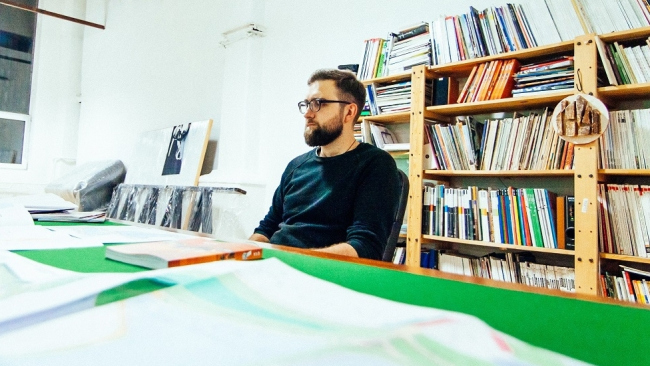 Aleksey Kurkov. Photograph © People's ArchitectAleksey: In Saint Petersburg, we are doing a reorganization of the cellars of the Yusupovsky Palace, the very cellars, in which Rasputin was allegedly killed. They will now become open to the general public, and a whole new exhibition floor will be added. In this same project we are developing the navigation, this applying to the first floor and the surrounding park as well – thanks to this, the information framework of the museum is created. Parallel to this, we are doing the design guidelines. This is a strategic museum project that includes several genres at once. The project of reconstructing the manège in Zvenigorod © People's ArchitectDmitry: Then we also do a landscaping project for Terletskaya Dubrava – wooden architecture, different state-of-the-art whistles and bells, a navigation system as well. All this takes place on an 11-hectare land site. We also designed for the Gorky Park the design project of landscaping the Golitsynsky Creek, and made there a swan house with ready-made façades. The project of renovating the cellars of the Yusupovsky Palace in Saint Petersburg © People's ArchitectThe project of landscaping the Golitsynsky Creek in the Gorky Park © People's ArchitectThe project of landscaping the Golitsynsky Creek in the Gorky Park © People's ArchitectThe project of landscaping the Golitsynsky Creek in the Gorky Park © People's ArchitectThe project of landscaping the Golitsynsky Creek in the Gorky Park © People's ArchitectThen, we have nearly completed the project of landscaping the central part of Troitsk. Troitsk is a “science town”, and we explored the theme of science liberally – we made sinusoid-shaped park benches, backlit asphalt, and various installations. It’s not something you would expect in a small town like that but the locals like it. The project of landscaping the Golitsynsky Creek in the Gorky Park © People's ArchitectPlus, seemingly low-profile, but just as important to us projects of the yard territories in Moscow’s district of Biryulevo. We take these territories and turn them into a cultural environment, which, the way I see it, has a huge positive impact on the life of the neighborhood. Landscaping the city center of Troitsk © People's Architect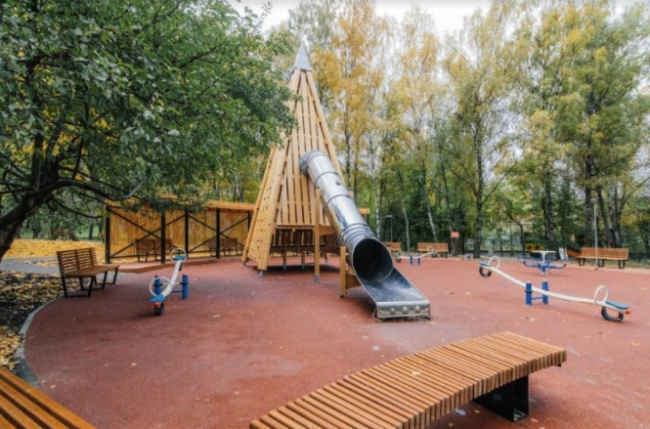 A garden in the disctrict of East Biryulevo © People's ArchitectWe generally like to make an accent on the cultural part. This holds true for our restoration projects, and our attention to cultural heritage; we oftentimes integrate into our work architectural elements that were inherent to this place in the past. For example, we designed the wooden structures that now surround the Yuri Dolgoruky monument. If you look really hard, you will see that these are variations of the Stalin Empire style, which is quite appropriate in the context of the Tverskaya Square. A garden in the disctrict of East Biryulevo © People's Architect– What do you consider to be “good architecture”? Anton: Architecture is a practical discipline, and we would like to see it make the world a better place. And this is where the idea of appropriateness comes into play. For example, the project of the Zvenigorod Manège is anything but ambitious from our side – we wanted to introduce a minimum of our own design because we wanted to make this building look historically correct. And in some cases it has to be just the other way around: you just have to make an art object that is at odds with the context, even if you have to sacrifice some of the functions. Nika Barinova-Malaya: – To me, architecture must always answer the question that it is faced with. There is this “challenge-response” theory that maintains that a civilization only develops when it is faced with questions that it has to answer in order to survive. I think this is equally applicable to architecture: an architect’s task is to be able to hear the question that he is faced with here and now, and come up with an adequate answer for it. This is a matter of professional intuition and talent. © People's ArchitectThe sculptural yard of the Shchusev Architecture Museum © People's Architect– What is your further development strategy? Dmitry: We are planning to expand our museum design branch. We offer a unique package for museums, this field is still unexplored, and there is work for everyone. And we are one of the few teams that offer turnkey solutions – from doorknobs to the concept of the museum’s development, which, of course, does not really refer to architecture. Of course, we are planning to seriously develop the landscaping branch. – Are you doing any projects in that area already? Dmitry: Of course! We did this concept for developing Gorokhovers – a charming little town that is completely unique because it has such a concentration of churches and monasteries that you get a feeling that everything beautiful from all across the nation is gathered here. We developed a complete architectural proposal for developing that town, and we defended it at public hearings in the Federation Council… We hope it will be realized one way or another. Aleksey: In our plans, we also have a direction connected with professional education. We are now in the final stage of negotiations with the Moscow Institute of Architecture about reading a few lectures on how to go about launching a project in real life: because the process of taking your project from the concept stage to the construction site with you as the general contractor is vastly different from everything that they teach you at the university. We acquired this experience the hard way, and we really want to pass it on to the next generations. The sculptural yard of the Shchusev Architecture Museum © People's Architect– And who are personal professional idols? Anton: Of course, we like our avant-garde, just as our modernism of the 1960’s – Pavlov, Belopolsky, and others. Dmitry: The Japanese, the Swiss, Peter Zumthor… Of course, we have a big respect for our Russian colleagues who work specifically in the area of modern forms. The challenges that they are faced with are now pretty obvious, yet, they still somehow manage to deliver high-quality architecture, and not only in Russia, too. But, generally, I really like what the guys from our team are doing. I guess you can say that I am their fan! |
|


